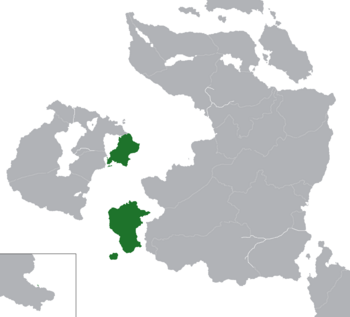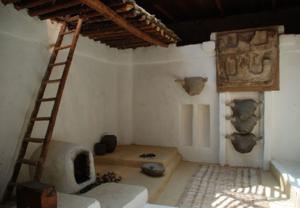Syrixia
This article is incomplete because it is pending further input from participants, or it is a work-in-progress by one author. Please comment on this article's talk page to share your input, comments and questions. Note: To contribute to this article, you may need to seek help from the author(s) of this page. |
Syrixian Empire साम्राज्य | |
|---|---|
Motto: None official | |
Anthem: "Thousands of Years" | |
 Map of the Syrixian Empire on Craviter, Collandris, and Meterra. | |
| Capital and largest city | Pataliputra |
| Official languages | None official |
| Recognised national languages | Suchari, Mercanti |
| Recognised regional languages | Durbanese, Kasov |
| Ethnic groups | 54% Samnadhi 26% Janapadhi 14% Ruritanian 3% Durbanese 2% Others 1% Kaleta |
| Demonym(s) | Imperial, Syrixian |
| Government | Constitutional monarchy |
• Emperor | Rajesh |
• State Curator | Rahul Sahab |
| Legislature | Imperial Diet |
| Formation | |
• Ascension of Emperor Adinatha | 19 AD |
• State Reform Acts | 1870 |
• Ascension of Emperor Rajesh | 2000 |
| Area | |
• Total | 371.55 km2 (143.46 sq mi) |
| Population | |
• 2018 estimate | 75,767,440 |
| GDP (nominal) | 2018 estimate |
• Total | $4.06 trillion (IBU) |
| HDI (2019) | 0.937 very high |
| Currency | Imperial Mudra |
| Time zone | UTC+1 (IST) |
| Date format | MM-DD-YYY SK |
| Driving side | right |
| Calling code | +80 |
| Internet TLD | .sa |
Here you put a summary of your nation's location, history, economic and demographic state, and organisation participation.
Etymology
The Mercanti name Syrixia is a corruption of a Kasov word- the word Siresza, which itself is a corruption of the Suchari name साम्राज्य (samraajya) meaning "empire"/"imperial state". It is not very clear, however, how this name originated. The general consensus amongst historians, however, is that it originated as a form of the word सम्राट (samraat), the Suchari word for "emperor", first coined by Emperor Rishabhanatha as an artificial replacement for the term हर्षित (harshata), the primary title used by Emperor Adinatha. This replacement was made in order to ensure that Emperor Adinatha's primary title, out of respect, was never used again.
History
Early Yuptakalpa
The oldest known settlements in the Empire were located in the Home Islands, dating to around 8000 BC. These settlements were generally located in the Khanta River Basin. These settlements generally evolved from the villages of neighbors or predecessors, using and perfecting irrigated agriculture to harness the fertility of the Khanta River Basin and controlling the formidable annual floodings of the Khanta River itself. Over the course of the succeeding millennia, villages continued to rise - and subsequently, small cities - at an exceeding rate, coalescing into the Khanta River Civilization. The breadth of the civilization increased as well, coming to encompass the entire basin.
The civilization subsisted primarily by farming, supplemented by a lucrative commerce that would come to spread across the Syrixian Home Islands, contributing to their eventual vast wealth during the early Samraajyakalpa. Crops likely cultivated at this time include sorghum, lentils, barley, sesame, and field peas; tropical fruits were also harvested. Dogs and cats were domesticated, as well as cattle and fowl; and first contact with dragons was made during this time, though none were yet tamed. The Syrixian elephant probably was also domesticated, and its ivory tusks were freely used. Minerals, unavailable from the alluvial plain, were sometimes brought in from far afield. Gold and jade, in particular, were prized, with both usually being found in the mountains surrounding the Khanta River Basin.
With time, cities grew larger and villages continued to coalesce, and cities grew their spheres of influence. Prominent cities at this time include Rehmana, Nausharo, Kaushambi, Dhola, Kayatha, Banawali, Rupara, and Chanhu; however, the most prominent and wealthy of the Khanta cities were usually located in the lower basin, near the river delta. Cities such as Charsadda, Dinya, Amri, Balakot, Kuntasi, Mitathal, and especially Kuru were prominent in this region, with Kuru serving as a major center of trade not just for the delta area, but the basin as a whole.
In addition, the cities of the Khanta River Civilization developed a palace economy, focusing their economic activities on or near central administration complexes. While at first the cities were ruled by oligarchic priesthoods, centering the early palace economies on religious complexes, gradually kings began to take their place. In turn, the palace economies shifted from city temples to luxurious royal palaces. Regardless of who controlled a city's palace economy, palace administrators supplied economic producers with the capital goods for the production of further goods and services, usually regarded as the property of the palace's ruling authority. However, though this system did create vast wealth for the civilization, it also created vast complexity and greater and greater wealth inequality.
Around 2900 BC (6100 YK), the Khanta River Civilization's flaws at last grew enough to push it over the edge. Though it remains unknown exactly what triggered these events, with there being many competing theories from famines to larger-than-usual river floods, it is generally believed that what followed was a sudden and highly pervasive systems collapse. Said systems collapse completely buckled the civilization's centralization, specialization, complexity, and top-heavy political structures. Peasant revolts, mercenary defections and revolts, demographic crises, and wars between the afflicted city-states all sharply escalated in frequency, with many of the once-proud city-states being sacked and destroyed altogether. Those that remained were significantly reduced in population, whilst new cities were built near the ruins of destroyed ones, including such cities as Meerut, Tosali, Bairat, and, most importantly, Sarnath.
High Yuptakalpa
Perhaps the most prominent city of the High Yuptakalpa, Sarnath was formally founded around 2904 BC (6096 YK) by Kirta, a former member of the court of Amri. At that point the area was home to a minor fishing village, but; as with the city of Pataliputra two thousand years later, the ambitious king greatly expanded and developed the city, forging new trade networks and establishing his authority, establishing the Shishunaga dynasty in Sarnath. His son Shuttarna I formed what would become the first professional army in the region; the first of its kind in Syrixian history. He began the rapid expansion of Sarnath's domains into what became known as the the Shishunaga Empire, first by uniting the northern city-states into a confederation under Sarnath and then conquering the central region of the Khanta River Basin.
Shuttarna's campaigns would continue under the aforementioned Shaushtatar I, known honorifically as महापुसह (Mahapusha) - the "Great Ancestor". Shaushtatar more or less completed the unification of the Khanta River Basin, centralizing the government and asserting Shishunaga rule, taking the title of राजाओं के राजा (Rajaon ke Raja), meaning "King of Kings". The Shishunaga Empire expanded across most of the northern half of the Home Islands during his reign, with the exception of the wealthy and well-defended port city of Balakot, which for many years evaded incorporation. Shaushtatar greatly reinforced infrastructure and commerce across the region during his long reign, and laid the foundation for the peaceful reign of his own son, Vasashatta I. This peace, however, would give way to court intrigue during the reign of the first female King of Kings, Tushratta.
Initially, Vasashatta I was succeeded by Artashumara I, who at the time was young and sickly. Tushratta, his mother and the last wife of the late King of Kings, acted as regent for Artashumara for three years, from 2764 - 2761 BC (6236 - 6239 YK). Eventually, however, Tushratta decided to seize full power for herself, deposing her son and reigning in the style of a male ruler, styling herself King of Kings. Though she had a prosperous thirty-year reign, her successor, her nephew Shaushtatar II, systematically erased most records regarding Tushratta's gender. Nevertheless, her reign began the golden age of Shishunaga power and sophistication.




